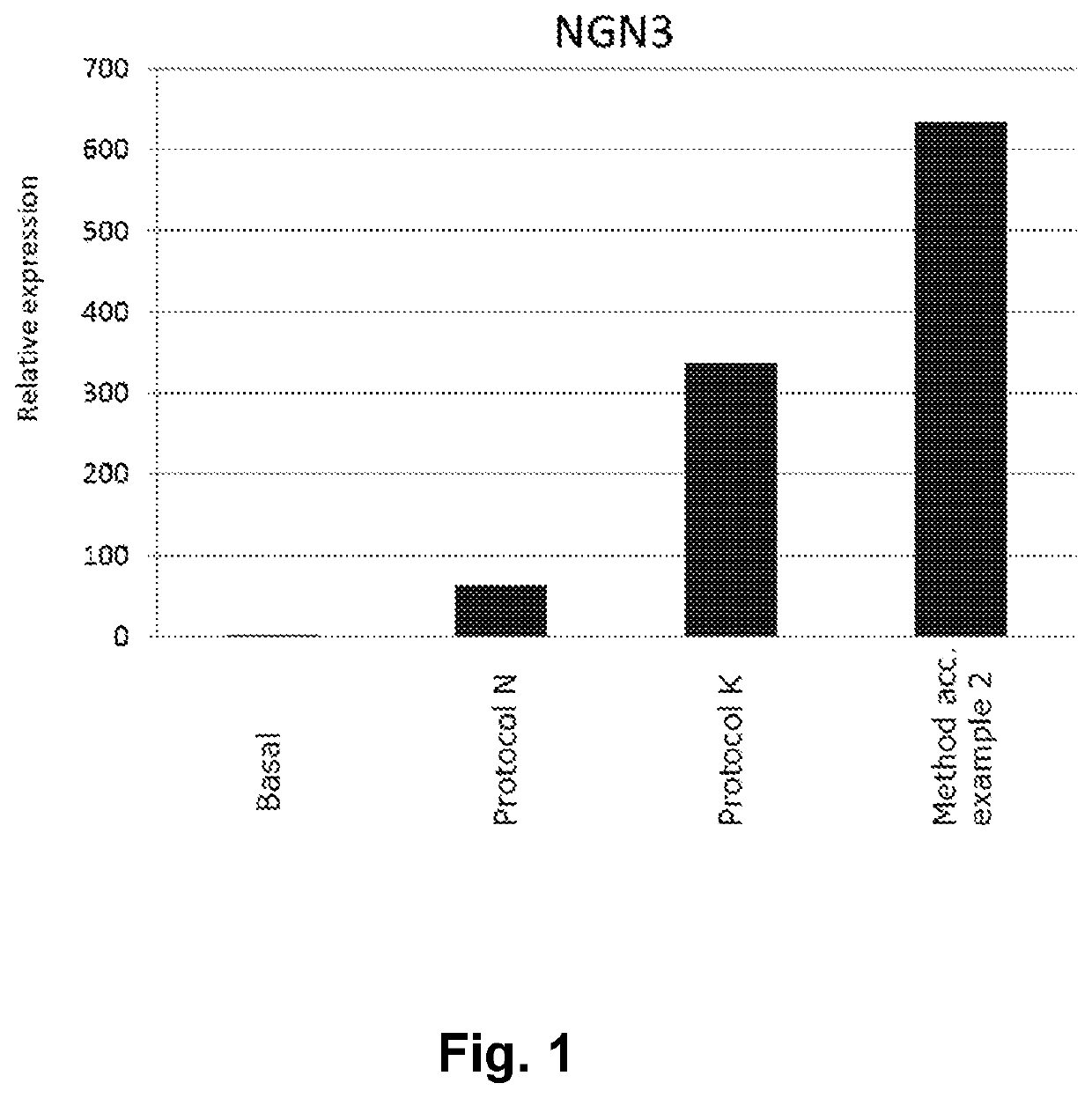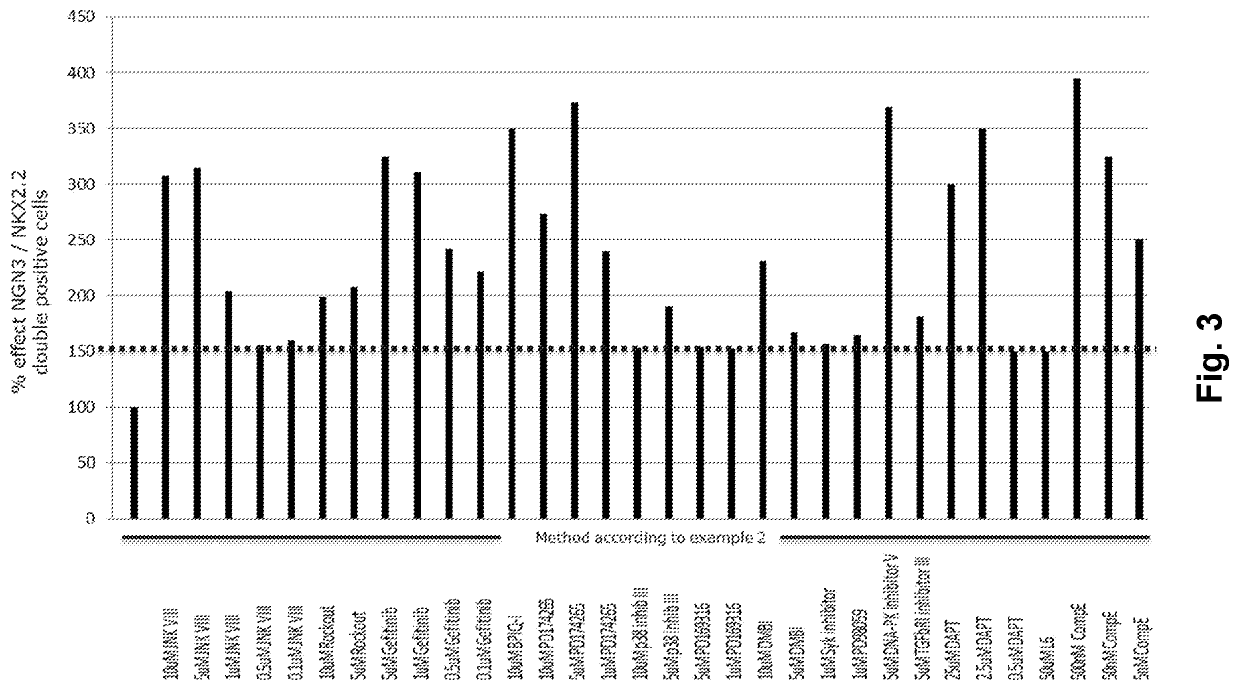Generation of Endocrine Progenitor Cells from Human Pluripotent Stem Cells Using Small Molecules
a technology of endocrine progenitor cells and small molecules, which is applied in the field of generating endocrine progenitor cells from human pluripotent stem cells, can solve the problems of restricting the use of this treatment as a clinical therapy, and achieve the effect of improving the efficiency of differentiating human pe cells, improving the percentage of ngn3/nkx2.2 double positive cells, and high levels of pancreatic endocrine hormones or digestive enzymes
- Summary
- Abstract
- Description
- Claims
- Application Information
AI Technical Summary
Benefits of technology
Problems solved by technology
Method used
Image
Examples
embodiment 1
[0106]A method for obtaining NGN3 / NKX2.2 double positive endocrine progenitor cells wherein a cell population comprising pancreatic endoderm cells are exposed to
[0107]a TGF-3 type I receptor inhibitor, and
[0108]a BMP antagonist, and
[0109]an adenylate cyclase activator, and
[0110]nicotinamide
[0111]in basal medium.
embodiment 2
[0112]A method according to embodiment 1 wherein the TGF-β type I receptor inhibitor is SB431542 and the BMP antagonist is noggin.
embodiment 3
[0113]A method according to embodiments 1 or 2 wherein the adenylate cyclase activator is forskolin.
PUM
| Property | Measurement | Unit |
|---|---|---|
| homogenous | aaaaa | aaaaa |
| energy | aaaaa | aaaaa |
| concentrations | aaaaa | aaaaa |
Abstract
Description
Claims
Application Information
 Login to View More
Login to View More - R&D
- Intellectual Property
- Life Sciences
- Materials
- Tech Scout
- Unparalleled Data Quality
- Higher Quality Content
- 60% Fewer Hallucinations
Browse by: Latest US Patents, China's latest patents, Technical Efficacy Thesaurus, Application Domain, Technology Topic, Popular Technical Reports.
© 2025 PatSnap. All rights reserved.Legal|Privacy policy|Modern Slavery Act Transparency Statement|Sitemap|About US| Contact US: help@patsnap.com



